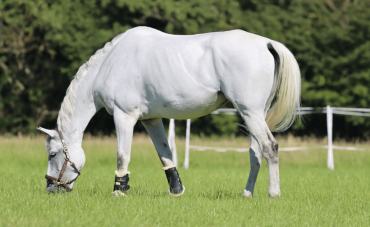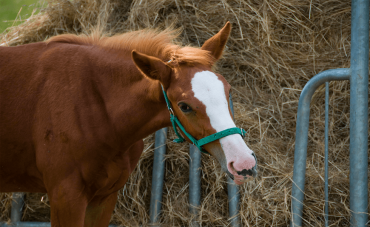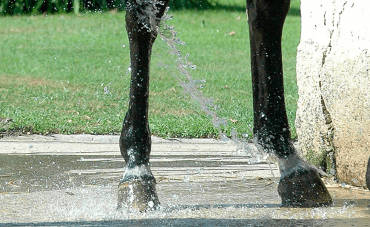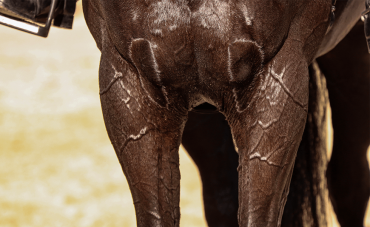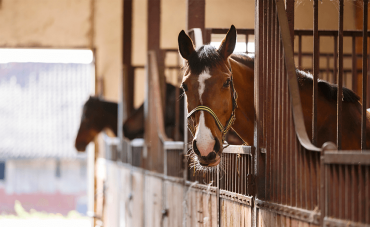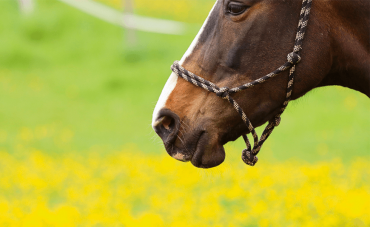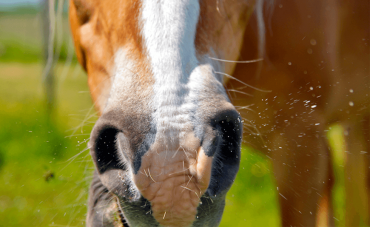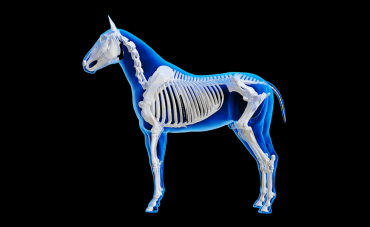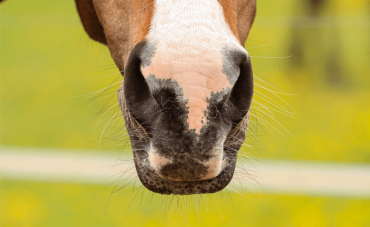Just like all animals, horses can suffer trauma injuries or become ill, leading to localised or generalised swelling. When swelling isn’t severe, it usually goes away on its own with no treatment required. However, if your horse is in severe pain, this swelling will need to be treated.
What is swelling?
Swelling is a normal reaction of the body to an external (something penetrates the body) or internal injury (tissue destruction).
A number of traumas can cause swelling:
- Kicks (by another horse or if the horse kicks itself): results in lameness
- Tendonitis (the tendon is damaged): swelling of the tendon which could be linked to lameness
- Insect bite: the area is hot and painful
- Side effect of a vaccine in the injected area: the horse has a stiff neck and has difficulty lowering its head
- Fracture: the horse no longer puts its leg on the ground or is very lame
- Arthritis and osteoarthritis: swelling of the joint and stiffness or lameness
- Gastritis and stomach ulcers: swelling of the lining of the stomach along with stomach ache or difficulty finishing food.
- Colitis and colic: swelling of the wall of the digestive tract and signs of abdominal pain
Swelling can also be linked to foreign bodies getting inside the body, referred to as an infection. "Invaders" can come in different forms:
- Bacteria: these cause foot abscesses, leptospirosis, Lyme disease, bacterial pneumonia and septic arthritis...
- Virus: these cause flu or rhino pneumonia
- Protozoa: the cause of piroplasmosis
- Fungal growth and pollen: the cause of emphysema or equine asthma
Whatever causes the swelling, it will lead to messengers being released that have different roles:
- Recruit the cells that defend the body and can even curb swelling
- Leads to the build-up of cells that maintain swelling
- Send a pain signal
Note that pain is brought about by localised swelling. Swelling messengers are only responsible for part of the pain; the other part is managed directly by the nerves.
When a nerve detects a shock or trauma, it sends a nerve message directly to the brain, signalling the area that’s in pain.
Pain is therefore linked directly to the nerve message and indirectly to inflammatory mediators. For example, in the event of a fall, the pain felt upon falling is down to the direct nerve pain; the trauma is detected by the nerves. The pain felt the day after the trauma-related injury is linked to swelling and, in turn, the transmission of pain by inflammatory messengers.
Signs of swelling in horses
There are 4 main signs of swelling:
- Pain: This can be expressed directly by your horse (lameness for orthopaedic pain). Pain can also be identified when applying light pressure to the suspected area (your horse's reaction will tell you whether the area is painful or not)
- Heat: this is easy to spot when the swelling is right below the skin. The difference in temperature compared to a normal area can be felt (comparing the tendons of other legs in the case of tendonitis)
- Redness: this is harder to perceive in horses because of their hair and skin, which is often dark. However, the redness is easily visible in certain areas, such as the conjunctiva of the eyes
- Bump or puffiness: depends on the affected area. It might be easily visible on an eyelid or on a tendon, or impossible to see with the naked eye in the case of bone swelling.
How to manage
swelling in horses?
Swelling is something that your horse's body needs to protect itself, even though it’s virtually impossible to keep it under control. Uncontrolled swelling can lead to long-term damage to certain organs and their functions. This is the case with emphysema, for example, which leads to a reduction in the functionality of the bronchi (organ) and, in turn, a reduction in the horse's respiratory capacity (functionality).
There are many ways to keep swelling under control:
- Control the source of the swelling:
Antibiotics (if required): To keep the bacteria causing the infection and, in turn, the swelling under control.
Manage the environment: In the case of emphysema, the amount of dust the horse is exposed to should be kept under control.
Rest: In cases of tendonitis, to control the stress on the affected tendon. - Use solutions that reduce the swelling:
Cryotherapy: the cold helps to reduce localised swelling
Physiotherapy: certain types of massage have anti-inflammatory properties through their mechanical draining action - Use solutions to treat the swelling:
Systemic medicinal treatments (administered orally or via injection by your vet): these work all over the body and, in turn, on the different swollen areas (e.g., anti-inflammatories or systemic corticosteroids)
Treatments via local administration: these come in the form of gels, creams or local injections. The treatment will target the affected area (this is the case with anti-inflammatory creams or gels, or corticosteroid infiltration therapy).
To alleviate pain and inflammation, veterinarians administer systemic anti-inflammatory drugs either through intravenous injection or oral means. They may also recommend products designed to protect cartilage.

